MXA RACE TEST: THE REAL TEST OF THE 2024 KAWASAKI KX250
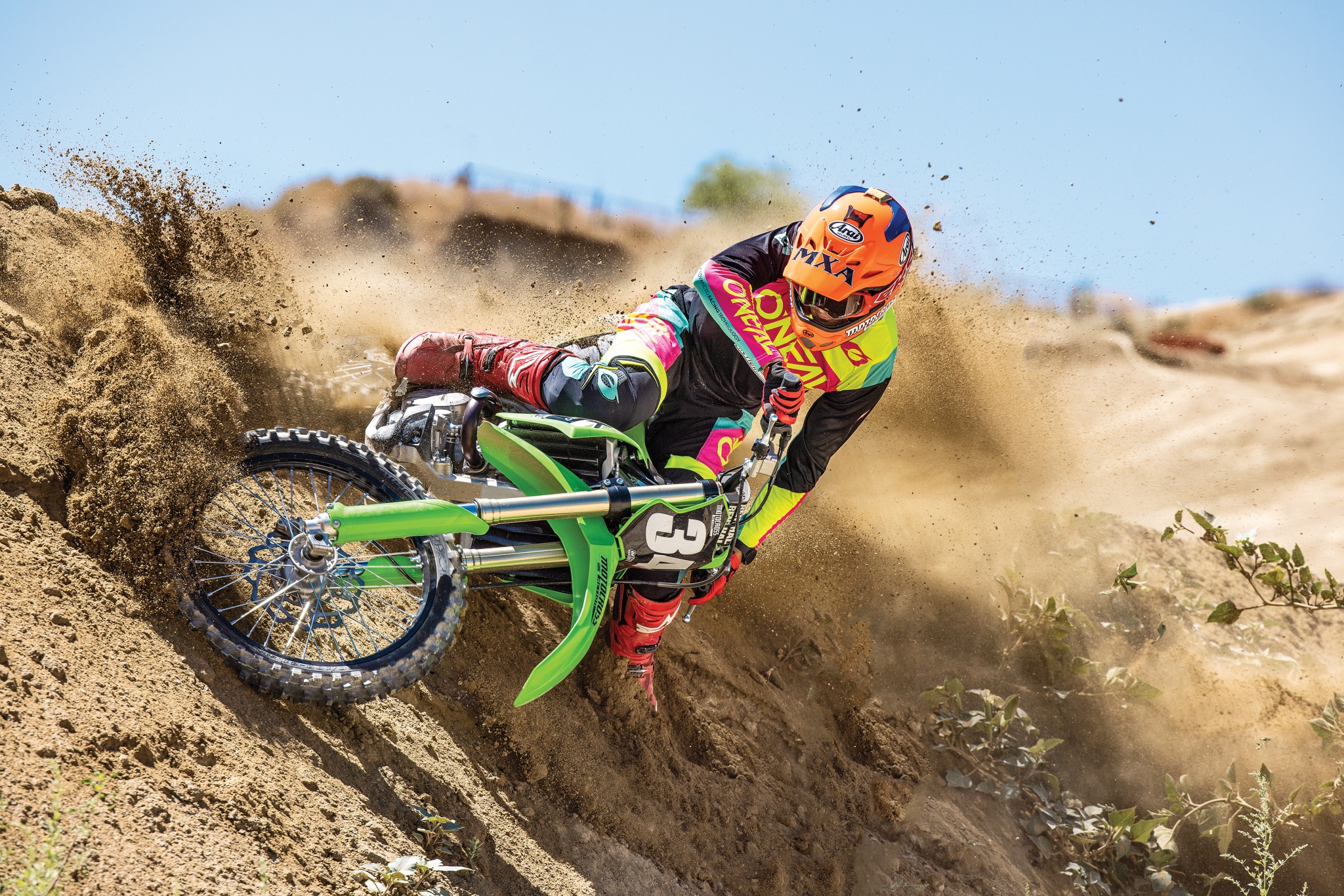
Q: FIRST AND FOREMOST, IS THE 2024 KAWASAKI KX250 BETTER THAN THE 2023 MODEL?
A: Not really. Performance-wise, it’s the exact same bike. The only changes for the 2024 model are updated shroud graphics with a bold KX logo, an all-green seat cover instead of black/green and green fork guards instead of black. All of the aspects we know and love about the KX250 are still there, as is every piece of the bike that we don’t appreciate, too.
Q: WHAT KIND OF CHANGES HAS THE KX250 SEEN OVER THE LAST FEW YEARS?
A: Kawasaki has been on a search for more horsepower ever since they moved ZX-10R Superbike chief engineer Seiji Azuma to the KX250 for the 2020 model. That’s when Kawasaki switched to the new-style, short-stroke, big-bore engine. Even after making big changes, Kawasaki spent more R&D money on their KX250 for 2021 when they ditched the kickstarter for a button, switched out the clutch cable for hydraulic actuation, and gained an updated crank, 3mm-longer connecting rod and stiffer valve springs. The icing on the 2021 updates were the new KX250 engine was nestled into the bigger Kawasaki KX450 frame.
Kawasaki held off on the updates in 2022, but went right back to work on the engine for 2023. The intake valves and piston went through updates, while first gear in the transmission was lengthened, and second gear was fine-tuned to offer a smoother transition from second to third. The clutch push-rod and connecting rod crush height on the big-end bearing were also adjusted for durability.
Additionally, the 2023 head pipe was lengthened by 100mm to enhance low-to-mid throttle response, and the flywheel’s moment of inertia was increased with a 1.4-ounce-heavier magneto rotor. The downdraft-style intake boot was made straighter, the upstream injector was repositioned from above the intake tract to below it, and the ECU’s ignition timing was reconfigured to complement the engine updates.
Besides the engine, the 2023 suspension settings were made stiffer (to their detriment), and the footpegs were made lighter and wider. The Dunlop MX3S tires were changed to MX33s, and the rear tire went from a 100 width to 110, even though it was still riding on the smaller 1.85 rim.
Overall, we were impressed to see substantial changes to the 2023 KX250 after such big moves in 2020 and ’21. With an all-new KX450 sucking up all the R&D money for 2024, we didn’t have high hopes for any updates on the 2024 KX250—and we didn’t get any.
Q: HOW DOES THE 2024 KAWASAKI KX250 RUN ON THE TRACK?
A: First of all, it is loud. Obnoxiously loud. Our test riders started bringing earplugs to wear under their helmets. Not only is the muffler loud, it’s exceptionally long. Thankfully, it’s not as long as the KX450 muffler, but it still sticks out like a sore thumb. Besides the blaring noise from the exhaust, the KX250 rattles with a tune that isn’t confidence-inspiring. Is it the chain roller? Is it the cam chain? Maybe it’s both? Either way, even when the bike was brand-new, our KX250 sounded like it was falling apart from the moment you pressed the e-start button. 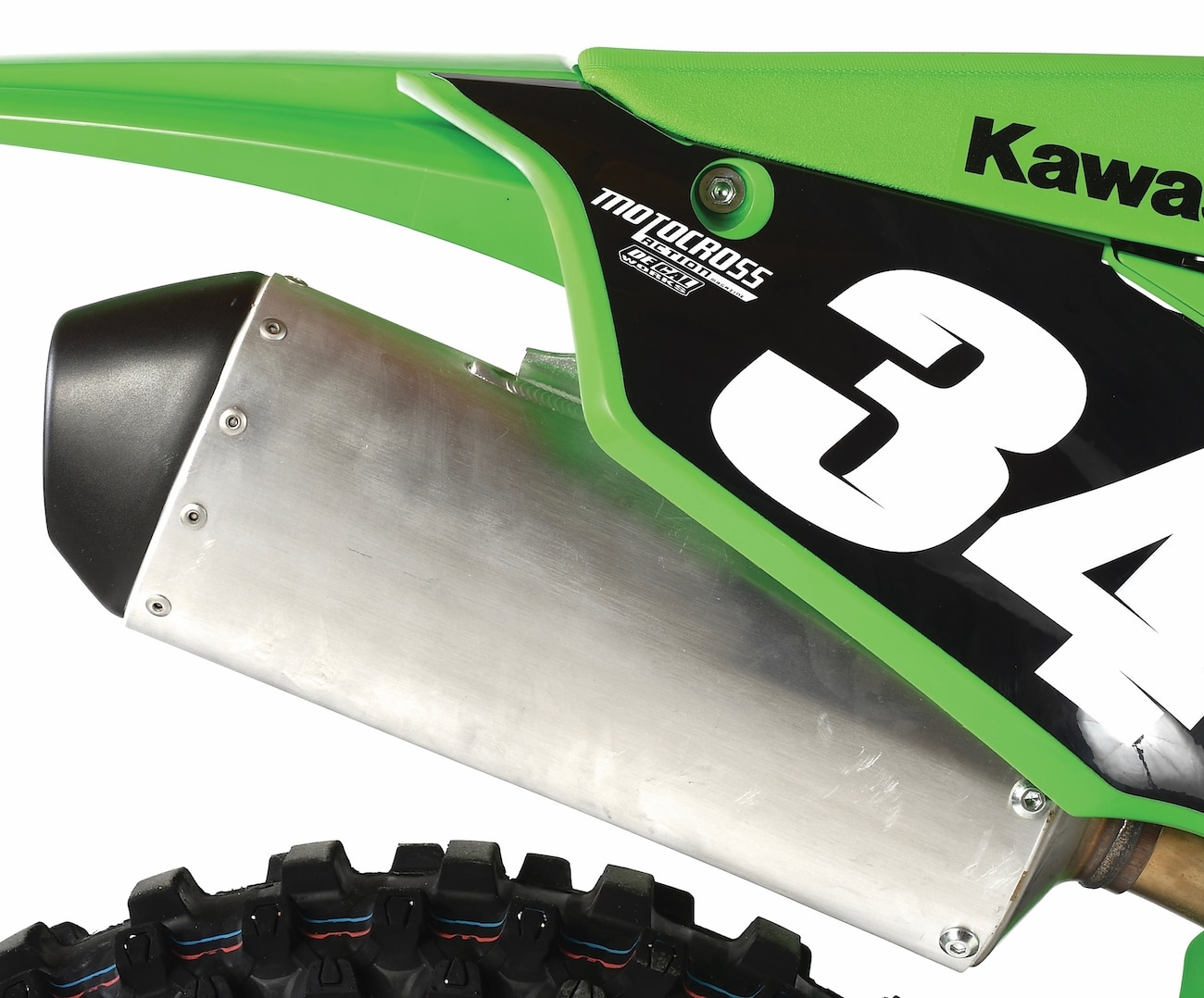
In the dirt, the 2023–2024 KX250 model runs like a modified 2022 bike. We rode the 2022 and 2023 KX250s back to back and felt that the changes made in ’23 were equivalent to putting an aftermarket exhaust and remapped ECU on your 2022 bike. It didn’t light the world on fire, but it was very nice to start off with a stronger engine.
Since the introduction of the big-bore short-stroke engine in 2020, we’ve praised Kawasaki for its high-rpm power and poked fun at Kawasaki for its lack of low-end torque. The updates made last year created a stronger midrange and top-end power, but the initial power at the first snap of the throttle was detuned as well. This change made for a less friendly power characteristic on corner exits. In search of more oomph, we installed the white coupler to access the “aggressive” map and switched the stock 50-tooth rear sprocket for a 51 to get it out of the corners quicker.
Still, we can’t complain too much. The 250 class is all about horsepower, and Kawasaki found a ton of it. Unfortunately, you need to ride the KX250 like a 125 two-stroke to get the most out of the high-rpm powerband. On the dyno, the 2024 KX250 makes an impressive 45.20 horsepower, which is jin the ballpark with the Husqvarna FC250’s 44.76 and the KTM 250SXF’s 45.22.
Q: HOW IS THE 2024 KAWASAKI KX250 FRAME?
A: We’ve consistently praised the 2019–2023 Kawasaki KX450 for its nimble and rider-friendly handling characteristics, especially when related to stability and corner-entry prowess. Unfortunately, Xerox engineering doesn’t work as well to get double usage out of the KX450 frame on a KX250 that is 6 pounds lighter (the KX250 is 228 pounds and the KX450 is 234 pounds) and has much less rotating mass. After two years of success with the new aluminum twin-spar frame on the KX450, Kawasaki threw their 250 engine in that same frame for 2021. This isn’t unheard of; in fact, all of the manufacturers share frames between 250/450 in some shape or form, but the geometry hasn’t worked out so well for Kawasaki.
The larger KX450 engine fills the aluminum frame perfectly, but the smaller 250 engine sits way back in the frame and leaves a very large gap between the frame’s front downtubes and engine. This wouldn’t be all that bad if Kawasaki had adapted its suspension to this setup or repositioned its engine, but that didn’t happen. In fact, with the ultra-stiff forks on the 2023–2024 KX250, it made this problem worse. The fact that the 250 and 450 share the same frame isn’t necessarily a problem, but the R&D department has to balance out the weight distribution and suspension settings. Kawasaki’s engineers didn’t do their due diligence. Take KTM as an example; they use their 450 frame on the 250. The difference? KTM went to the added expense of casting new engine cases for the 450SXF, 350SXF and 250SXF with the identical dimension and mounting points. This way, they could share the same frame.
Q: HOW IS THE 2024 KX250’S KAYABA SUSPENSION?
A: Interestingly enough, Kawasaki uses Showa suspension on their 450s and Kayaba on their 250s. You guessed it, the Showa suspension is too soft, and the Kayaba bump stoppers are too stiff. The 2024 Kawasaki KX250 suspension has an incredible amount of holdup. Both the KX250 forks and shock got stiffer valving last year, and this was immediately noticeable on the track. Test riders could feel that the overall ride height of the KX250 was taller because of the stiffer suspension.
These forks are far too stiff for the typical 250 rider (often coming out of the SuperMini class). The initial action at the top of the forks worked fine, but the valving ramped up very quickly in the mid-stroke, which created a harsh feel in the bumps. The stiff forks also made it harder to initiate turns, because they positioned the front end higher and didn’t allow the forks to compress as much under braking. It’s nearly impossible, even for our heaviest or fastest riders, to get the forks to deliver full travel.
The best fix is to send the suspension to your favorite tuner and have them go to a light spring rate and valve them for your speed and size. However, if you want to go with the do-it-yourself method, you can try what we did. We switched the stock 4.9 N/mm fork springs for lighter 4.7 N/nm springs and lowered the fork oil height by 30cc in each fork. The Kayaba forks come stock with 290cc of fork oil and call for a minimum of 260cc and a max of 360cc. Even with the oil level at 260cc, they were still too stiff, but it was easier to manage. The stock forks are manageable if you’re a fast or heavy rider. It also helps if your track’s dirt is soft and loamy, because the heavier dirt helps with fork compression, but once the traction goes away, it’s a pain trying to find your line on the stock KX250.
We left the Kayaba shock fairly stock, because any changes only made the handling worse. In the end, going out on high-speed compression just 1/8 of a turn gave us the most comfort in stock form, but true KX250 nirvana will only be found after sending this suspension off to Pro Circuit or your tuner of choice.
In addition to softer forks, we’ve also switched out the stock 23mm offset triple clamps for Ride Engineering’s 22mm offset split triple clamps. They shorten the wheelbase slightly and worked together with the softer forks to help correct the understeer sensation caused the stiff forks and rearward engine position in the frame.
Q: WHAT DO WE HAVE TO LOOK FORWARD TO ON THE 2025 KX250?
A: Common sense tells us that the 2025 KX250 will follow in the footsteps of the all-new 2024 KX450, which we will get our dirty little hands on soon. That 2024 KX450 has a new frame, new engine, Brembo front brake (with a Nissin brake in the rear), ODI lock-on grips (which we love), and a Bluetooth-connected smartphone app for adjusting the ECU mapping.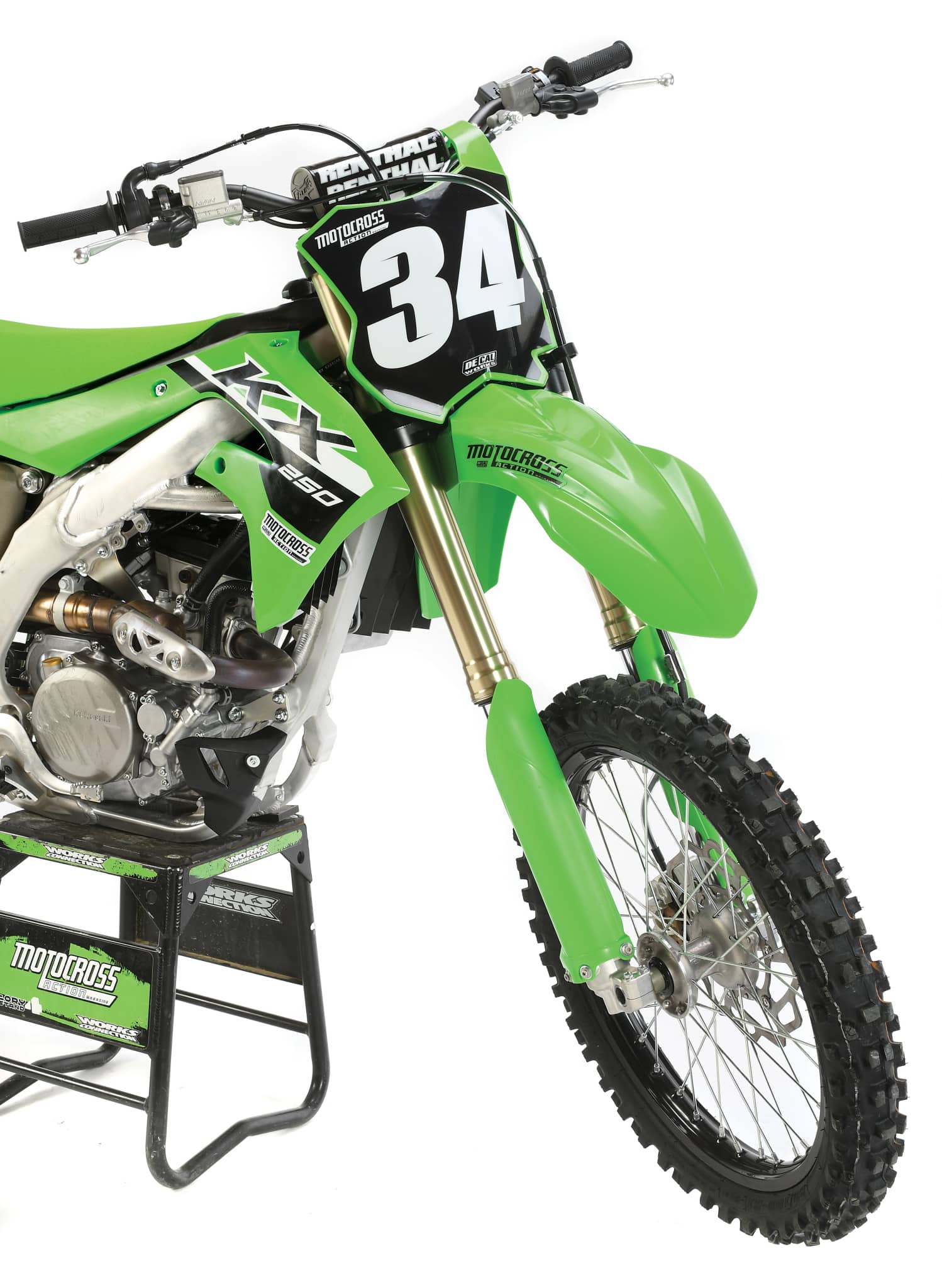 The stock KYB forks are really stiff.
The stock KYB forks are really stiff.
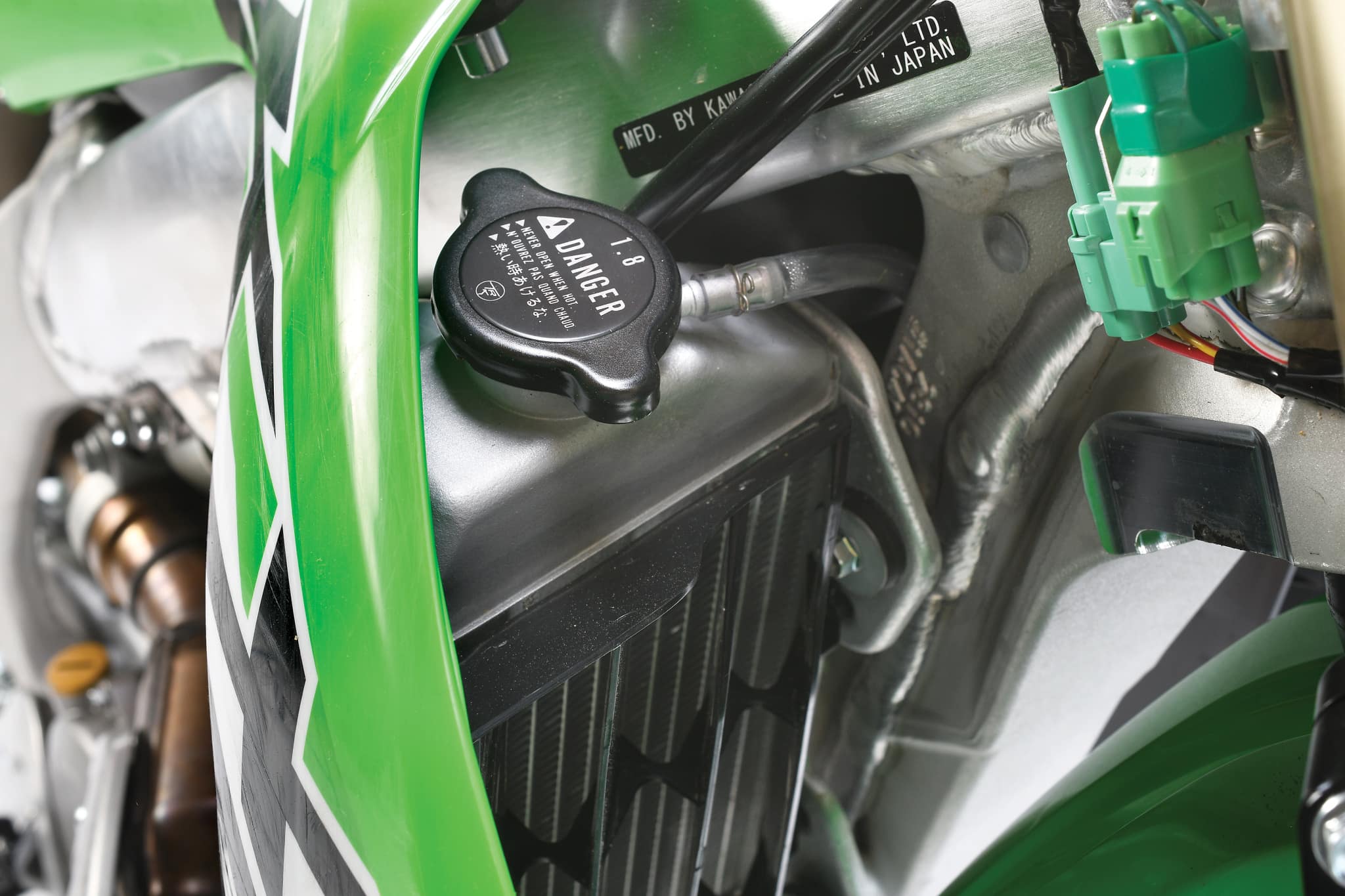
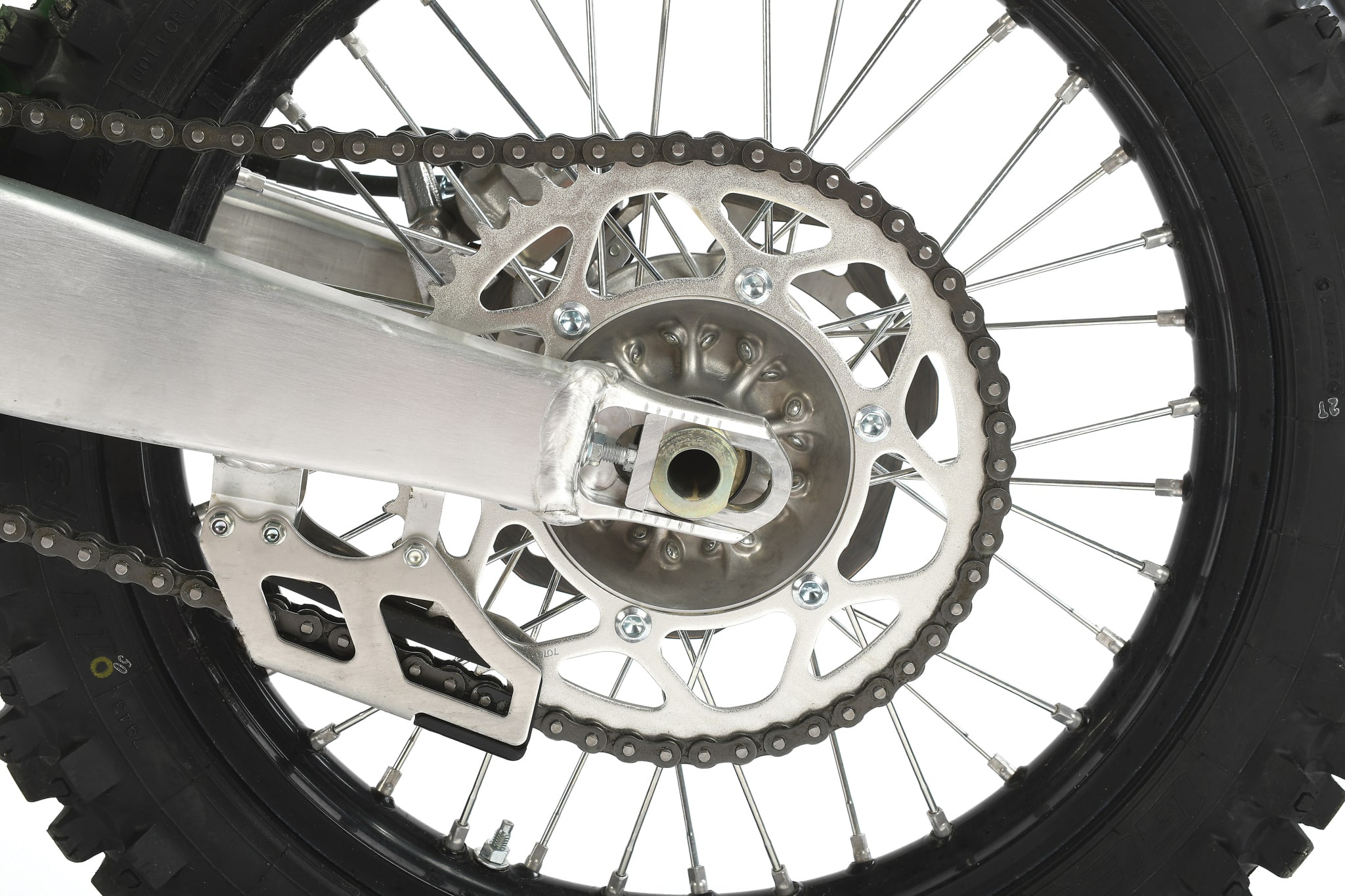
Q: WHAT DID WE HATE?
A: The hate list.
(1) Levers. We’ve complained endlessly about the oddly shaped clutch and brake levers that don’t even match each other. The 2024 KX450 will at least have a Brembo front brake lever.
(2) Plastics. Kawasaki plastic is brittle. Roost has turned our stock front number plate into a vented front number plate and our stock fork guards into vented fork guards (not good).
(3) Bolts. The steel bolt that threads into the aluminum subframe threads to hold the airbox cover on strips out easer than any bolt on any other brand.
(4) T-plate. The T-plate holding the seat onto the rear fender falls out every time you remove the seat bolts. Bolt Hardware makes fancy T-plates that don’t fall out and will stay in place.
(5) Frame. We’ve harped on this enough (see above).
(6) Suspension. Factor in a suspension re-valve to your budget when buying this bike.
(7) Radiator cap. This bike comes stock with a less than satisfactory 1.1 kg/mm2 radiator cap. Kawasaki replaced ours with a 1.8 kg/mm2 cap before they even gave us the bike.
(8) Chain roller. Switch out the stock Kawasaki chain rollers with TM Designworks’ Slide-N-Guide kit.
(9) Melody. A loud bike is cool if it sounds fast, but this 250F makes loud, raspy reverberations.
(10) Exhaust. Besides being loud, the header pipe sticks out too far, which was noticeable when our test rider’s right leg constantly rubbed up against it. Plus, the muffler is too long.
(11) Bar mounts. The bar mounts twist when you tip over because the rubber damper inserts have the density of marshmallows.
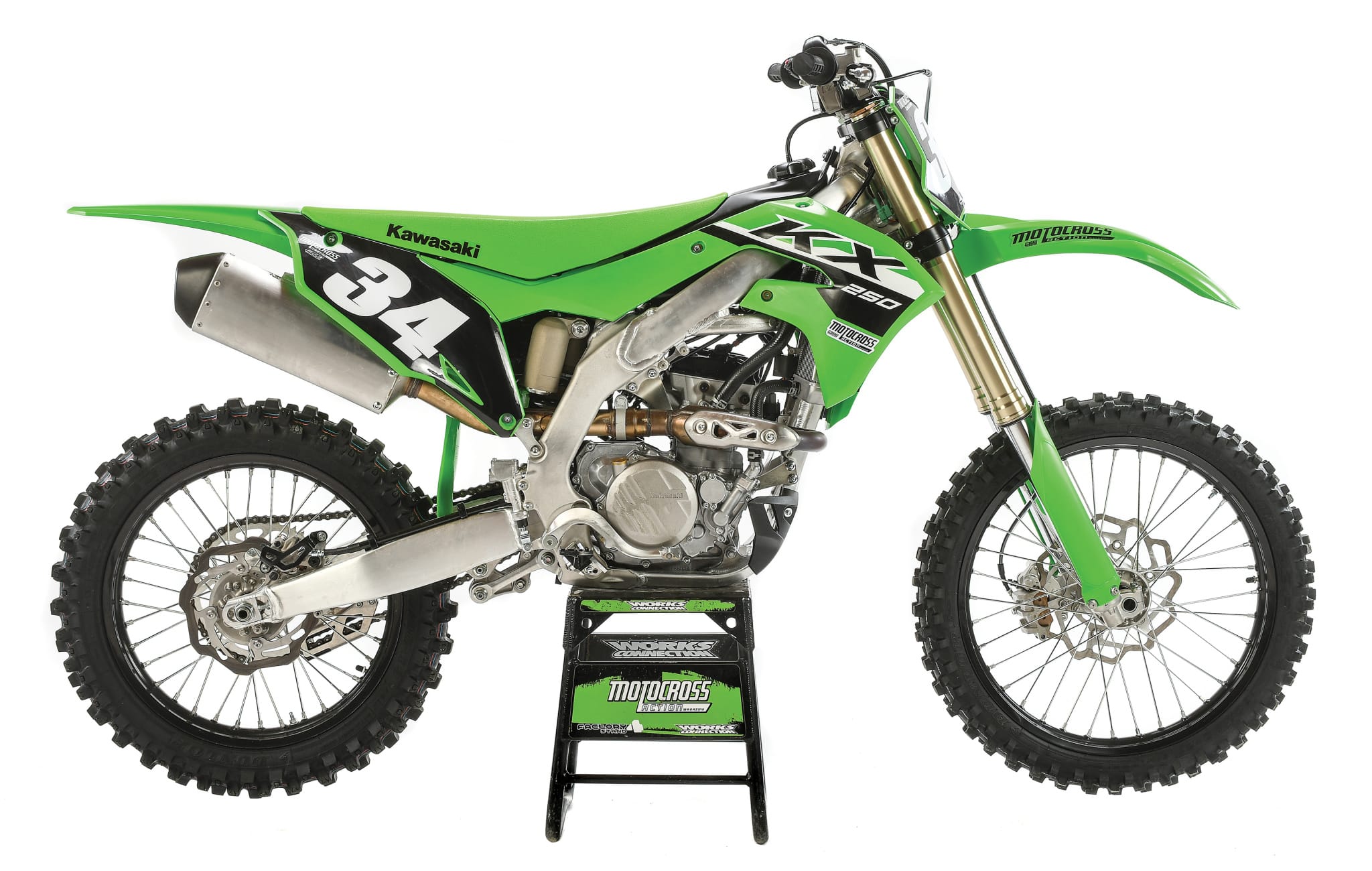 With incredible top-end power, the only fly in the ointment is the front end’s tendency to push on corner entrances.
With incredible top-end power, the only fly in the ointment is the front end’s tendency to push on corner entrances.
Q: WHAT DID WE LIKE?
A: The like list.
(1) Power. This high-horsepower, high-revving engine runs with the best in class on the top end. The 2024 KX250 is a missile at fult-tilt.
(2) Footpegs. The rider triangle is comfortable from the get-go, and Kawasaki took the extra step to offer an extra footpeg mounting hole to lower the pegs slightly for taller riders.
(3) Brakes. The Nissin brakes are good, but we know that the Brembos front brake on the KX450 is going to be great.
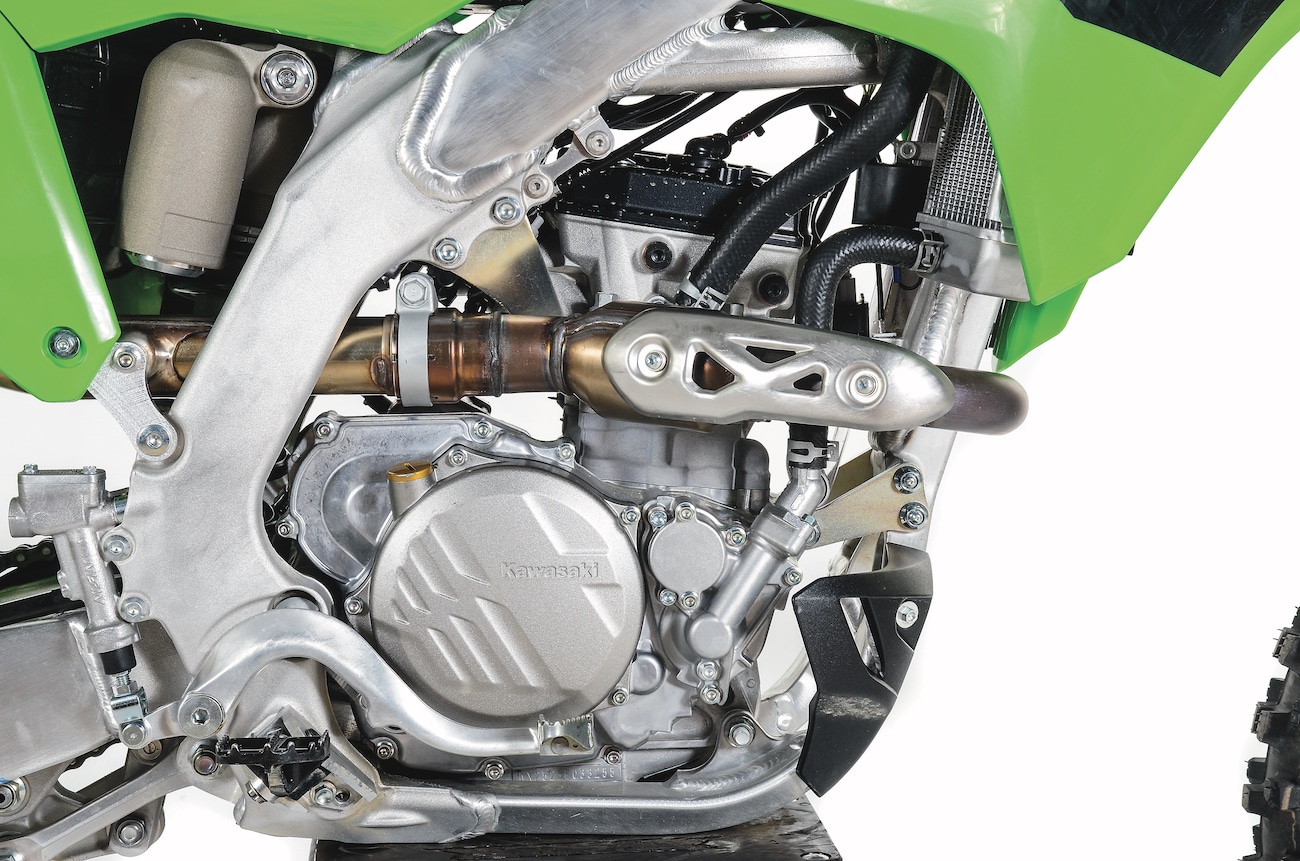
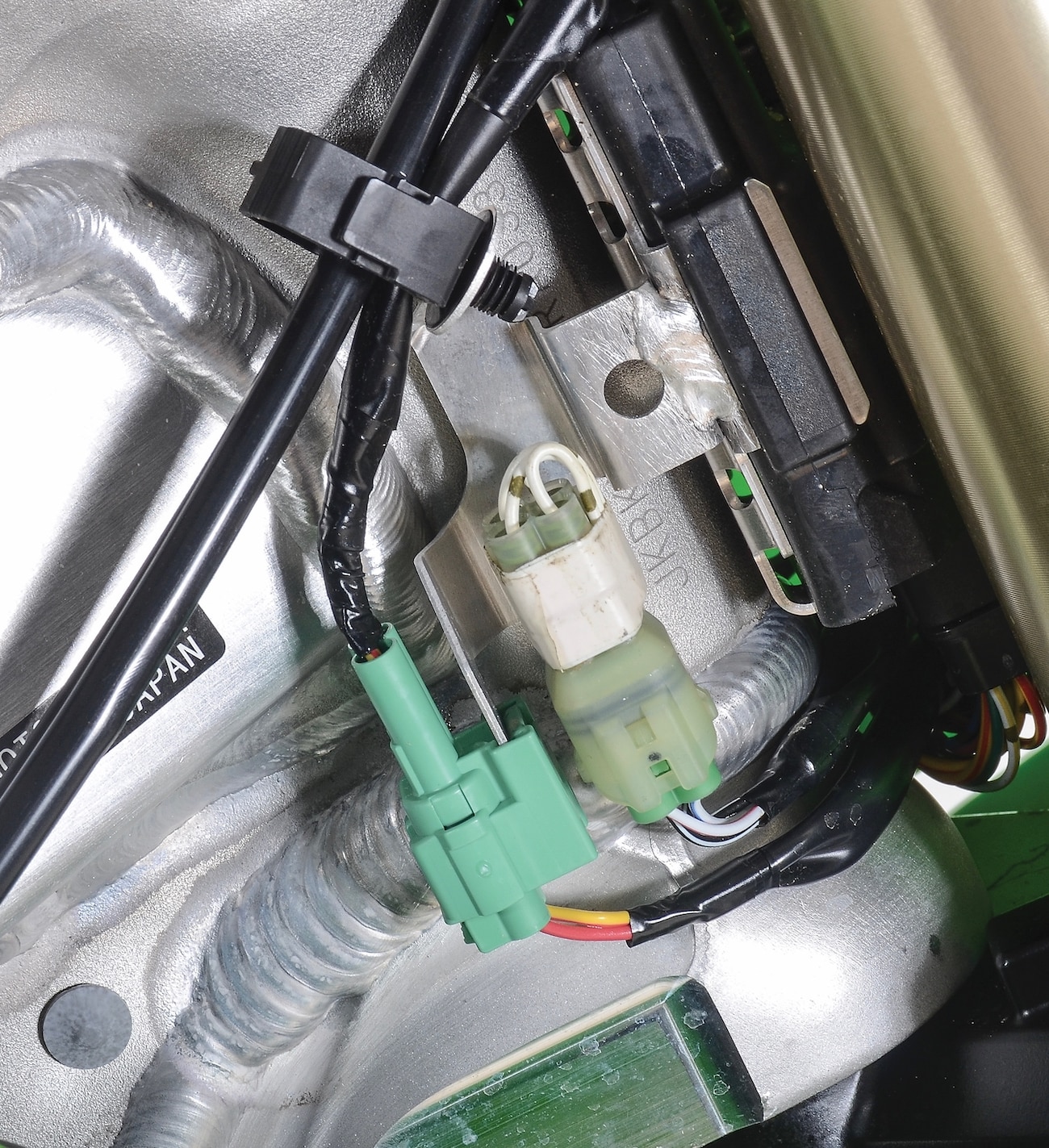
(4) Maps. The three different map couplers offer their own power characteristics, which we like, but the plug-in couplers are old-fashioned.
(5) Tires. Last year Kawasaki joined the movement to spec a 110/90-19 rear tire, but unfortunately they mounted it on the small 1.85 rim size.
(6) Price. Once again the price jumped up by $100, but we can’t complain too much because it’s not as expensive as the Austrian brands.
(7) Graphics. Aesthetically, the 2024 model looks more racy. We like the extra green and bold new graphics.
Q: WHAT DID WE REALLY THINK?
A: The 250 class is all about horsepower, so we must applaud Kawasaki for their pony-producing efforts. However, when a bike understeers on the corner entrance, it’s hard to get full use out of the powerband. If you’re constantly making mistakes in the corners, you won’t be able to carry the momentum needed to let this engine shine. The 2024 Kawasaki KX250 has a governor on it, and the governor is the frame and the Supercross-stiff Kayaba forks.
On our 2025 KX250 wish list is more low-end torque, a 250-friendly frame, softer and more compliant suspension, a more durable chain guide and buffer kit, threads that won’t strip out, and denser bar-mount inserts. 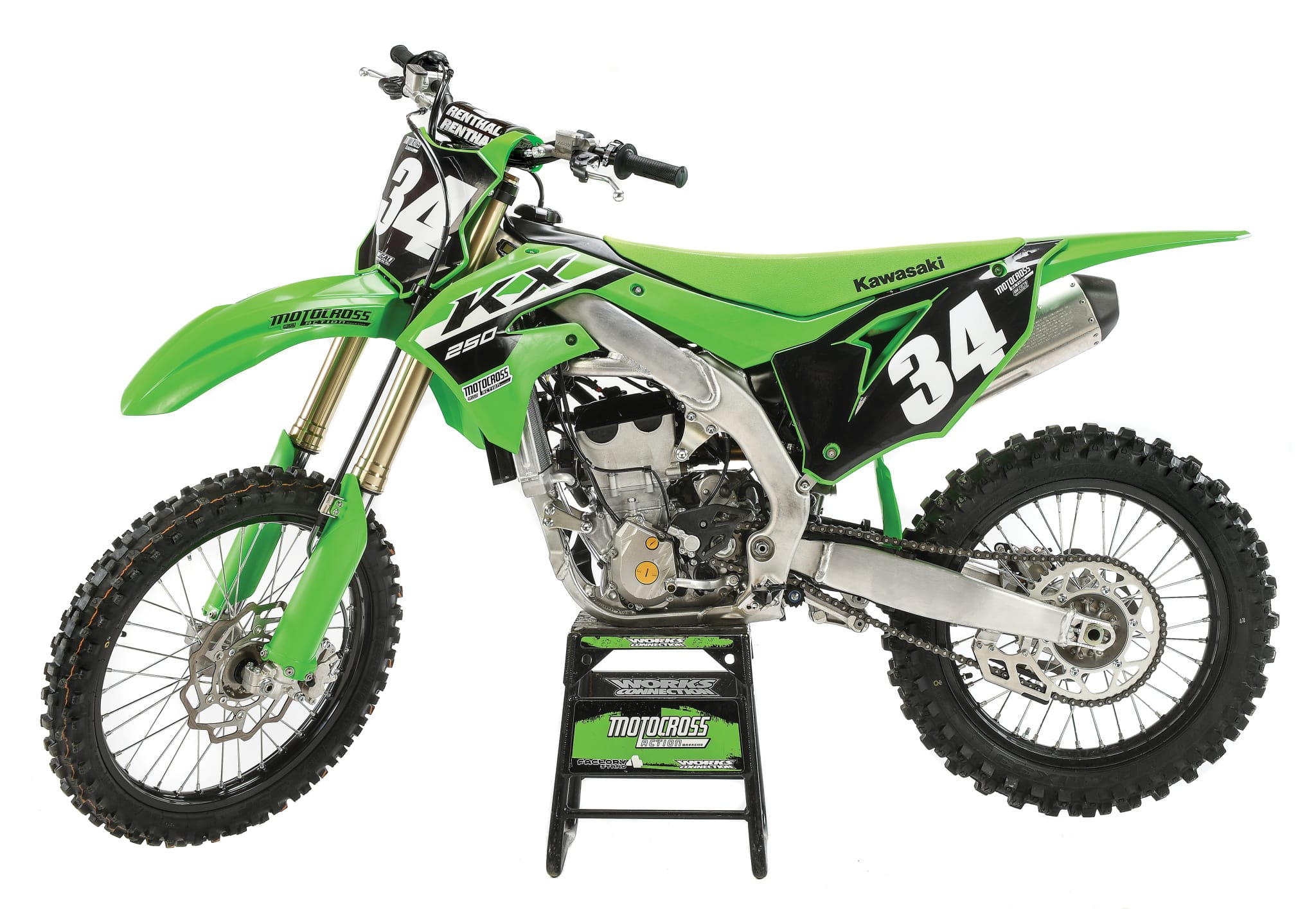
With some fine-tuning, the KX250 has the potential to be a great race bike.
MXA’S 2024 KAWASAKI KX250 SETUP SPECS
This is how we set up our 2024 Kawasaki KX250 for racing. We offer it as a guide to help you find your sweet spot.
KAYABA SPRING FORK SETTINGS
We’ve already said the forks are stiff, but at least we’ve given you options for improving them. We always put a zip-tie on one fork leg to monitor how far the fork compresses. The sweet spot is 1-1/2 inches from bottoming, but good luck getting within 3 inches of bottoming on the KX250 forks. For hardcore racing, these are MXA’s recommended 2024 Kawasaki KX250 fork settings (stock settings are in parentheses):
Spring rate: 4.7 N/mm (4.9 N/mm stock)
Compression: 12 clicks out
Rebound: 12 clicks out
Fork-leg height: 5mm
Notes: If you don’t have the funds for a re-valve, drain 30cc of fork oil out of each leg’s air-bleed hole to soften them up. Drain it into a measuring cup to calculate how far you’ve gone. Draining oil is easy; adding oil requires a few extra tools. To drain fork oil, simply remove the air-bleed screw on the fork cap, turn the fork upside down, and let the oil drip into a micro measuring cup that measures at 5cc increments.
KAYABA SHOCK SETTINGS
For hardcore racing, these are MXA’s recommended 2024 Kawasaki KX250 shock settings:
Spring rate: 54 N/mm
Race sag: 100mm (103mm)
Lo-compression: 12 clicks out
Hi-compression: 1-7/8 turns out (1.5 turns out)
Rebound: 13 clicks out (15 clicks)
Notes: Race sag affects how much weight is on the front end. A lower 105mm of race sag will take weight off the front, making it harder to turn, while 100mm of race sag will make it turn sharper. We liked 102mm for our suspension after adjusting the forks.


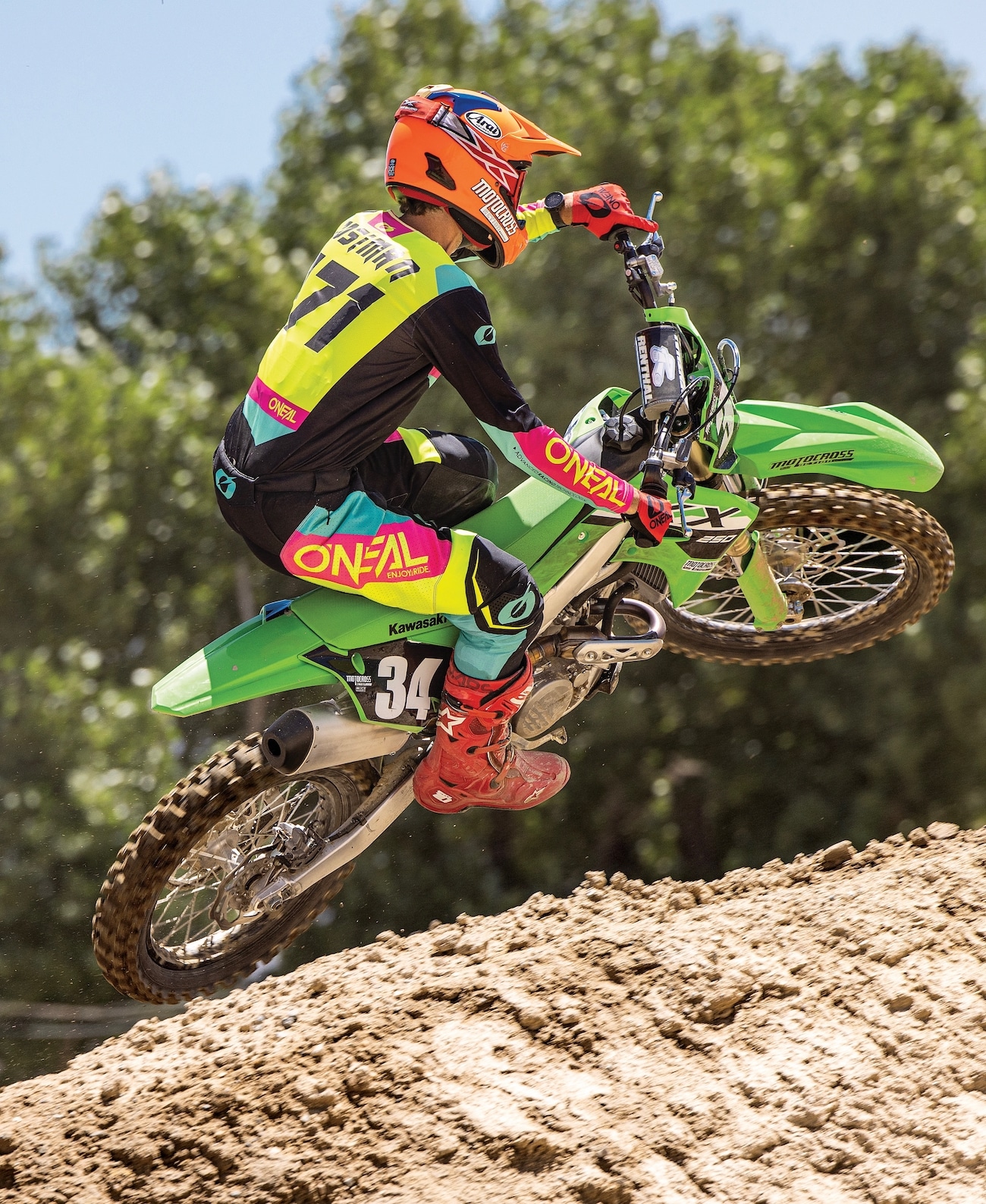
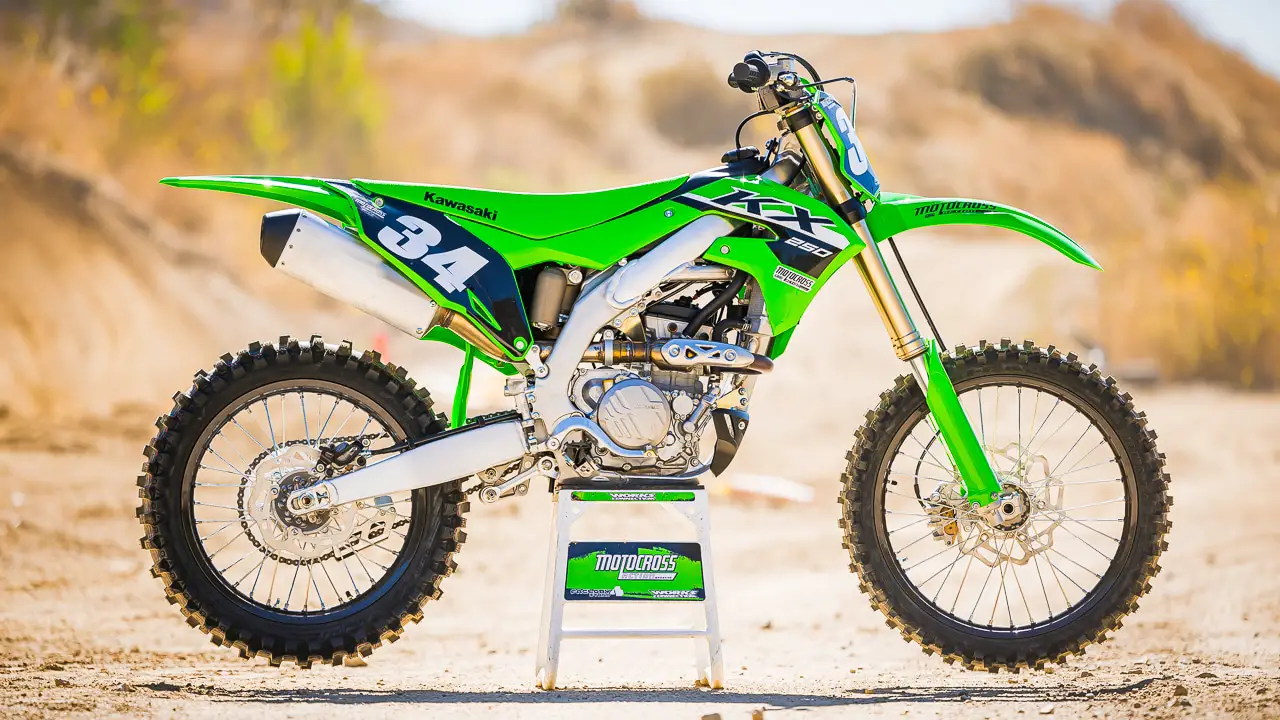
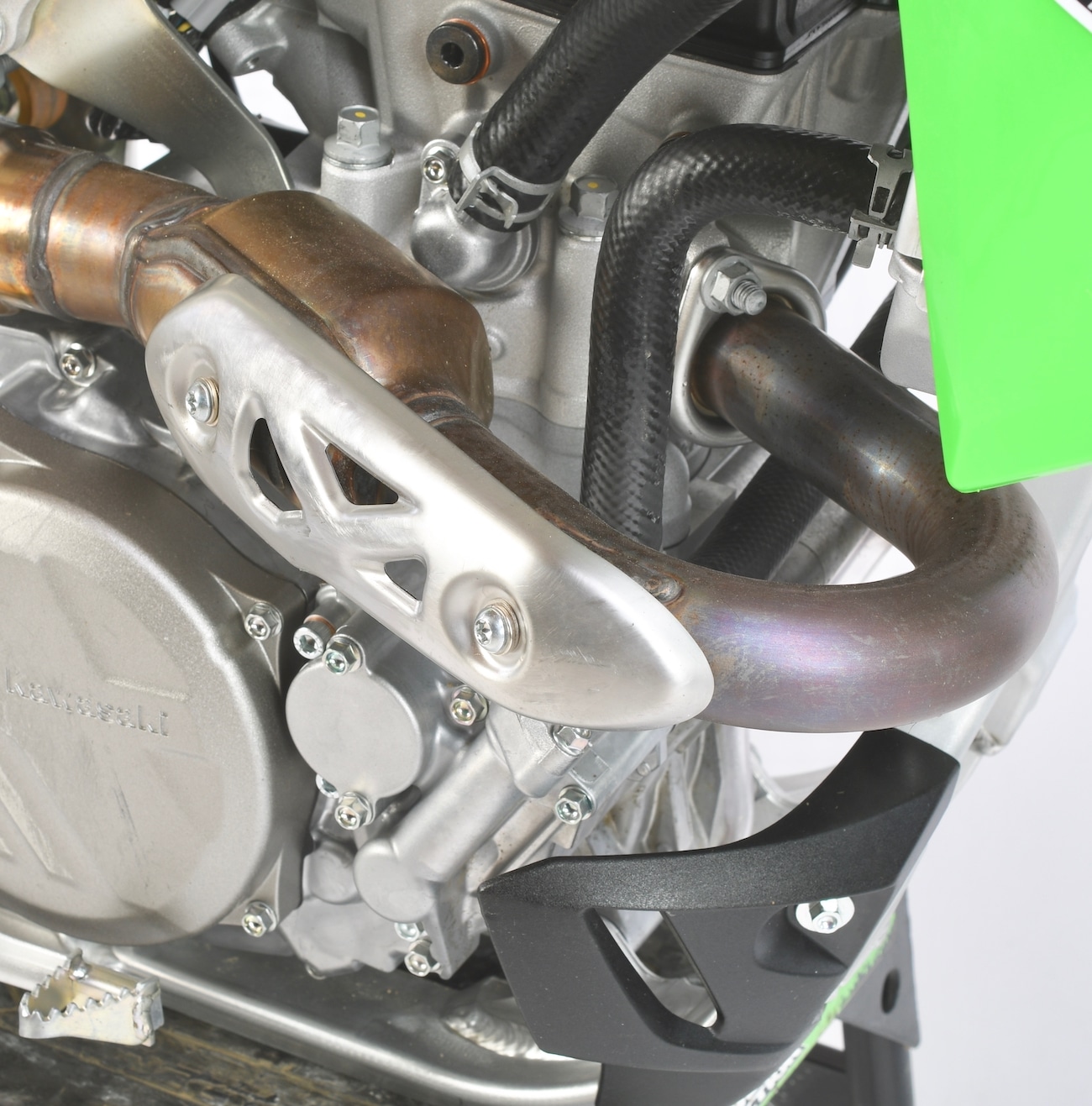

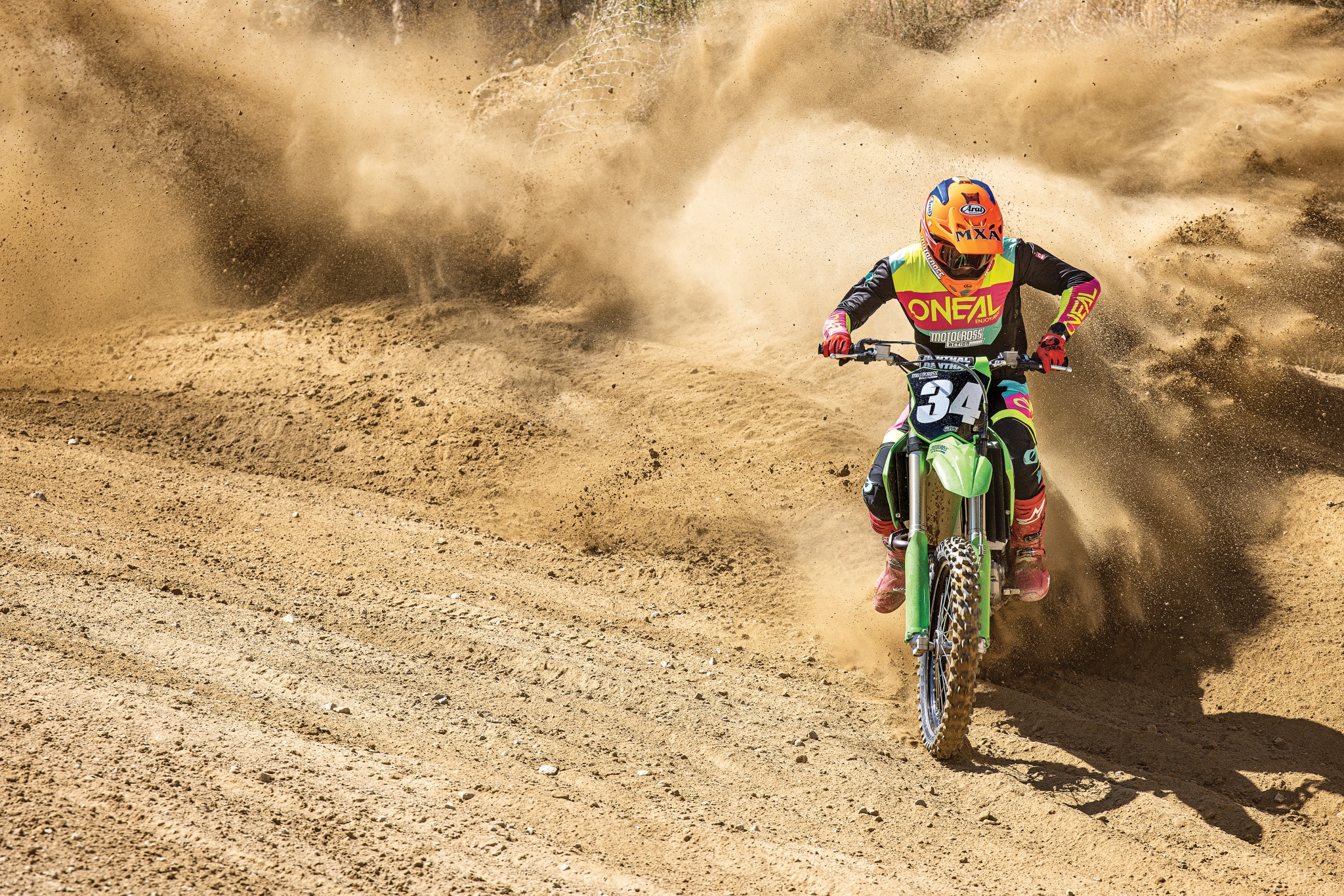




Comments are closed.